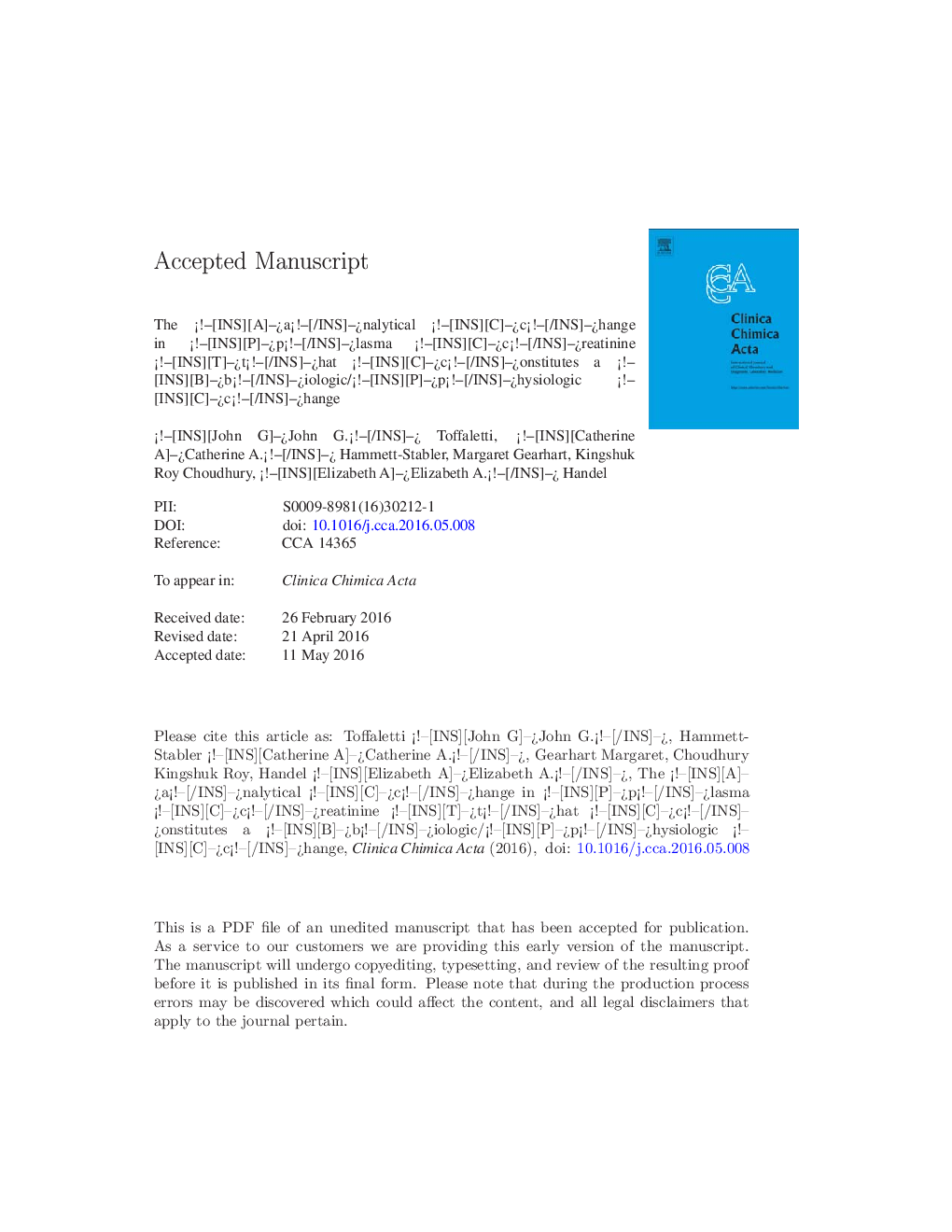| Article ID | Journal | Published Year | Pages | File Type |
|---|---|---|---|---|
| 8310014 | Clinica Chimica Acta | 2016 | 19 Pages |
Abstract
While all three of the creatinine methods studied had good precision, the ENZ method had the best precision, such that a change of 0.07 mg/dL (6 μmol/L) in serial creatinine concentrations up to 1.5 mg/dL on a patient could indicate a biologic change had occurred. For the alkaline picrate methods, a measured change of creatinine of 0.23 mg/dL for AP1 or 0.11 mg/dL for AP2 would indicate that a physiologic change in serum/plasma creatinine has occurred. While a definite biologic change may simply represent daily variations, detecting a biologic change in creatinine more rapidly could impact the ability of creatinine to detect early and clinically significant changes in renal function.
Keywords
Related Topics
Life Sciences
Biochemistry, Genetics and Molecular Biology
Biochemistry
Authors
John G. Toffaletti, Catherine A. Hammett-Stabler, Margaret Gearhart, Kingshuk Roy Choudhury, Elizabeth A. Handel,
